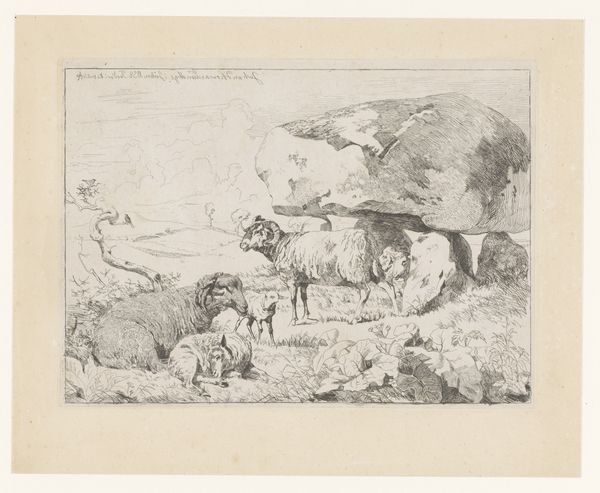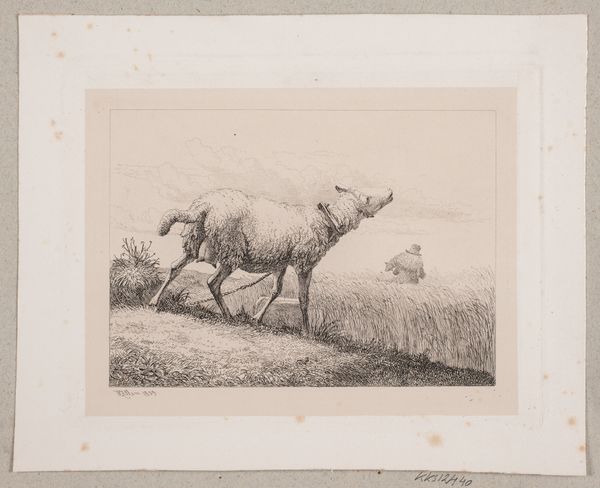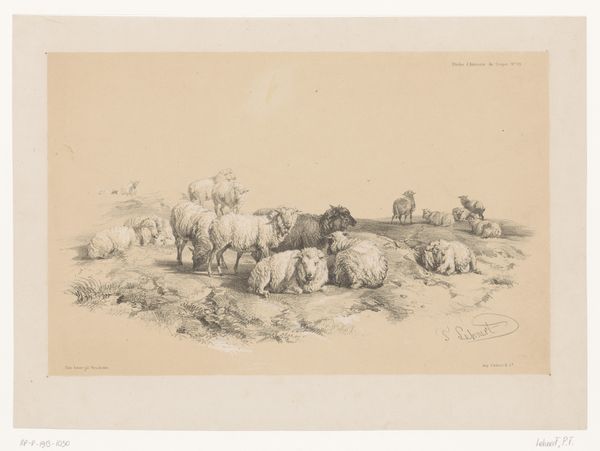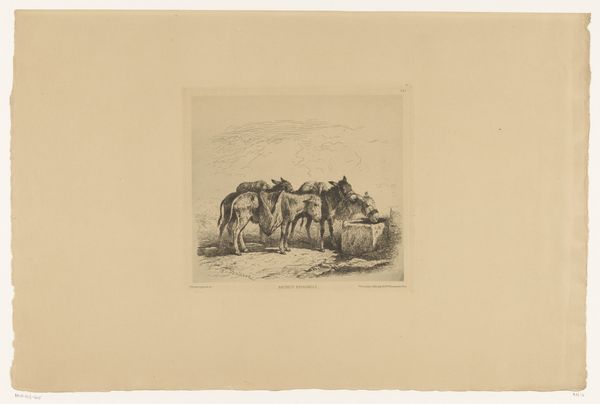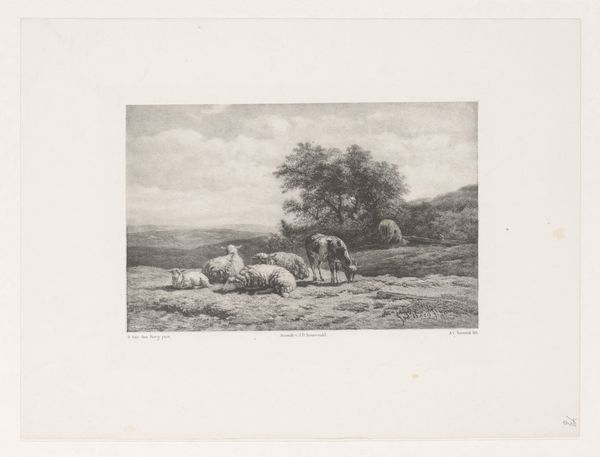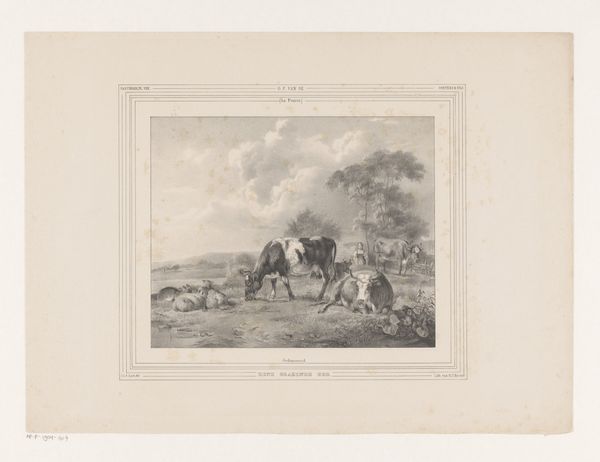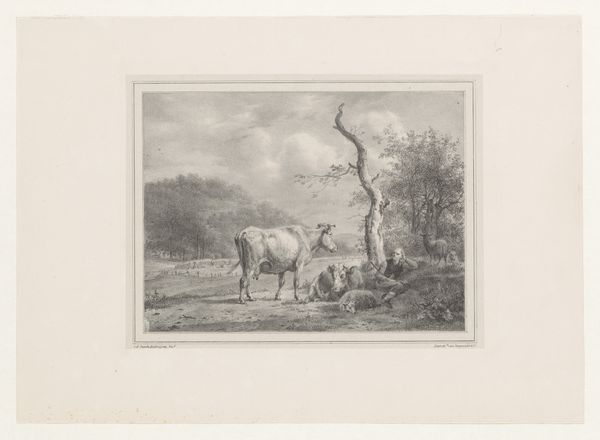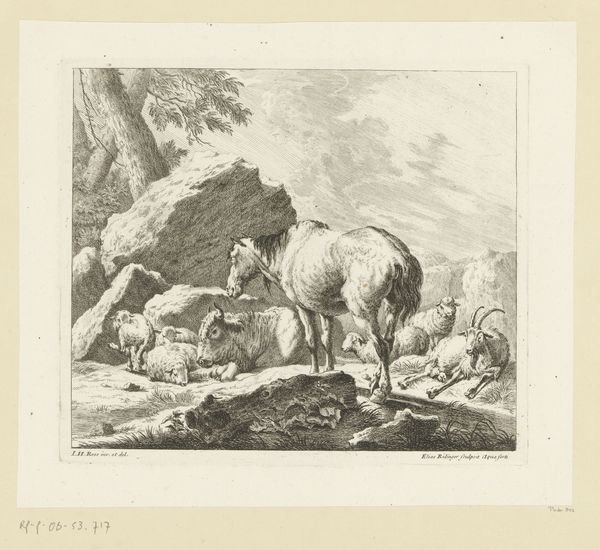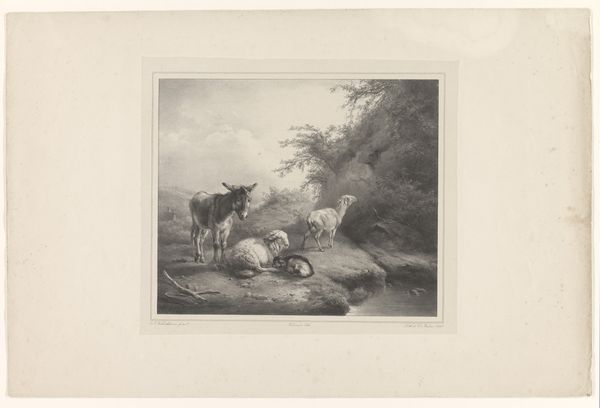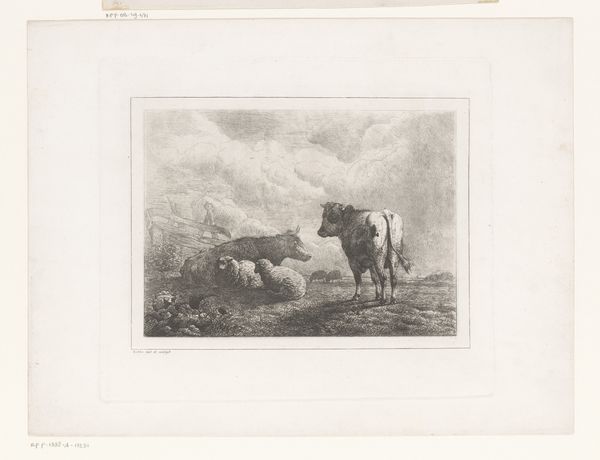
drawing, print, etching, paper, ink
#
drawing
#
animal
# print
#
etching
#
landscape
#
paper
#
ink
#
genre-painting
#
realism
Dimensions: height 178 mm, width 199 mm
Copyright: Rijks Museum: Open Domain
Curator: Augustin Mongin's etching, "Landschap met rustende schapen en geiten," or "Landscape with Resting Sheep and Goats," likely created between 1853 and 1911, presents a tranquil pastoral scene rendered in ink on paper. Editor: It does evoke a sense of calm, doesn't it? There’s a softness in the light and the way the animals are clustered together that suggests a refuge from the outside world. But something about the goat standing separate feels significant. Curator: Indeed. Consider how rural genre paintings functioned within the context of rapidly industrializing societies. There’s often an idealization of rural life embedded, a nostalgic look back at agrarian rhythms in contrast to urban chaos and exploitation. The image could represent an appeal for social and political reform or perhaps comment on the economic landscape. How are we valuing manual labour and natural life? Editor: It is interesting to view the political context as an additional layer of analysis here. For the artist, choosing this subject in itself, situates the artwork squarely within debates concerning societal structure and resource allocation of that time. Are the working classes being forgotten? Are rural life values worthy? Curator: The etching technique itself also speaks to a specific history – printmaking democratizing image distribution, allowing for broader social access to art and ideas. It’s less about unique artistic genius, and more about disseminating messages widely, challenging the elitist consumption of art. Also the material condition is not very fine art, so speaks more to art being available to the common classes of the time. Editor: And thinking about it today, these images are consumed very differently by people as many seek nostalgia. It's a reminder that interpretations evolve alongside social and technological changes. Perhaps now it serves as a gentle reminder of simpler times as we face a climate crisis that may disrupt modern lifestyles, which serves as an entry-point to discuss human impacts on our ecosystems. Curator: A potent point. Considering it now, Mongin’s landscape acts as both a historical document and an instigator for contemporary conversations. Editor: Exactly. It reminds us how art's meaning shifts across time.
Comments
No comments
Be the first to comment and join the conversation on the ultimate creative platform.

